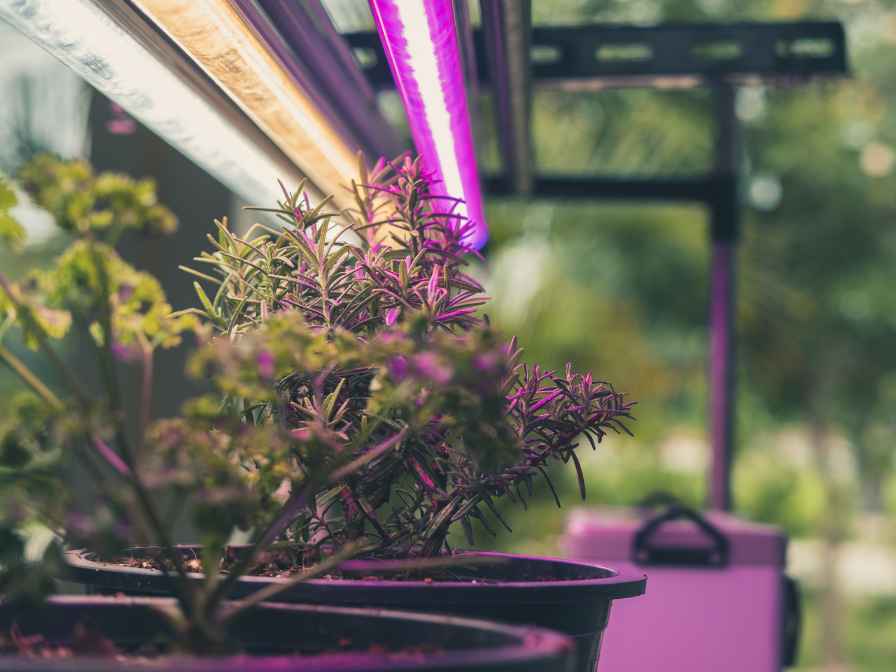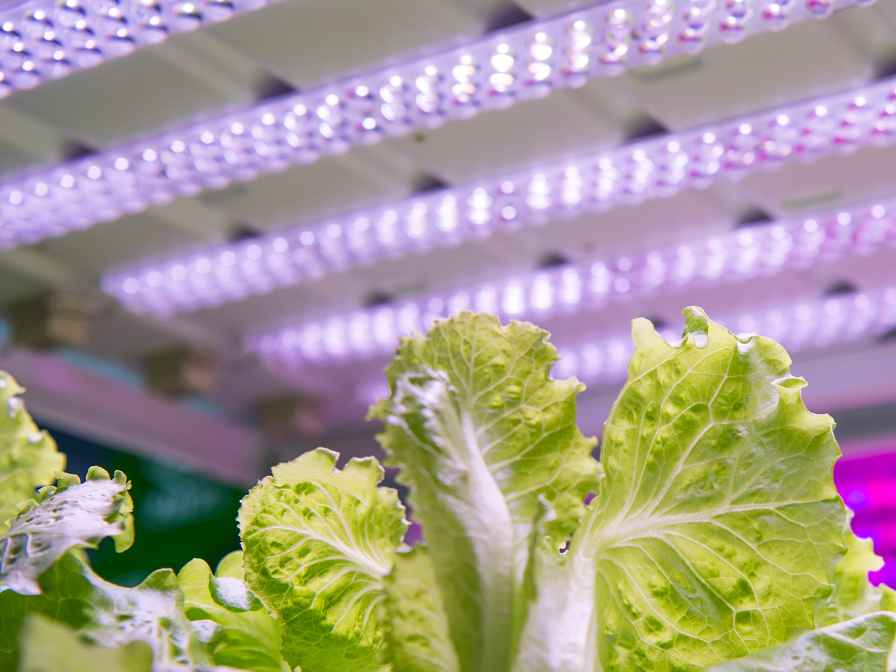Light is the basic requirement for all plants. Light plays important role in the process of photosynthesis which is important for plant growth. Especially for indoor plants, people do wonder what is the best lighting for indoor plants. Well, we are going to tell you about that.

Lighting For Indoor Plants
Indoor lighting for plants is a crucial aspect of successful indoor gardening, as it plays a significant role in providing the right amount and quality of light that plants need for photosynthesis and growth.
When it comes to lighting for indoor plants, there are two main types of lighting:
Natural Sunlight and Artificial Lighting
Natural sunlight is the ideal light source for indoor plants, as it provides a full spectrum of light that plants require for healthy growth. However, not all indoor spaces have access to ample natural sunlight, especially during the winter months or in areas with limited sunlight.
In such cases, artificial lighting, such as fluorescent, LED, or HID (high-intensity discharge) lights, can be used to supplement or replace natural sunlight. These artificial lights are designed to mimic the different wavelengths and intensities of sunlight, providing the necessary light spectrum for plant growth.
The choice of artificial lighting will depend on the specific needs of the plants being grown, as different plants have different light requirements. So, choose the lighting accordingly so that your indoor plants can grow well.
It’s important to consider factors such as light intensity, duration, and distance from the plants to ensure optimal growth and prevent issues like stretching or burning of the plants due to inadequate or excessive light. Regular monitoring of the plants and adjusting the lighting accordingly is crucial to ensure healthy indoor plant growth.
Benefits of Lighting For Indoor Plants
Proper lighting is essential for indoor plants as it plays important role in the basic process of photosynthesis and offers several benefits:
Photosynthesis and Growth
Plants need food for growth. Plants produce food through the process of photosynthesis by converting light energy to chemical energy, by using the light. Adequate light exposure ensures that plants can carry out photosynthesis efficiently, resulting in healthy growth, optimal leaf development, and better overall plant vigor.
Proper lighting also helps regulate important plant processes such as flowering, fruiting, and seed production.
Overcoming Limited Sunlight
Indoor spaces may have limited access to natural sunlight, especially during winter months or in shaded areas. Artificial lighting can compensate for the lack of sunlight and provide the necessary light spectrum and intensity for plant growth.
This allows for year-round cultivation of a wide variety of plants, including those that require high light levels, regardless of the location or season.
Flexibility and Control
With artificial lighting, indoor gardeners have the flexibility to customize the lighting conditions to suit the specific needs of their plants. This includes controlling factors such as light intensity, duration, and spectrum, which can be adjusted to match the growth stage, species, and specific requirements of different plants.
This level of control allows for precision in providing optimal lighting conditions for indoor plants, leading to improved growth rates, higher yields, and better overall plant health.
Pest Prevention
Indoor plants are susceptible to pests and diseases, and proper lighting can help reduce the risk of infestations. Well-lit environments discourage the growth of certain pests, such as fungus gnats and spider mites, which thrive in low-light conditions.
Additionally, adequate lighting helps with the early detection of pest infestations, allowing for timely intervention and prevention of further spread.
Aesthetics and Décor
Indoor plants not only provide health benefits but also enhance the aesthetic appeal of indoor spaces. Well-designed and properly lit indoor gardens can create a visually pleasing ambiance, adding beauty and freshness to homes, offices, or other indoor environments.
Lighting can be used strategically to highlight specific plants or areas, creating focal points and adding a decorative element to the overall interior design.
Best Lighting For Indoor Plants

There are several different lighting techniques and methods that can be used for indoor plants, depending on the specific needs of the plants and the available space. Some of the most commonly used lighting options for indoor plants include:
Fluorescent Lights
Fluorescent lights are popular for indoor gardening due to their affordability, energy efficiency, and versatility. They come in various types, including T5, T8, and compact fluorescent bulbs, and are suitable for growing a wide range of plants, including herbs, leafy greens, and low-light houseplants.
Fluorescent lights are ideal for providing the right spectrum of light for both vegetative and flowering stages of plant growth.
LED Lights
The most popular gardening lights known as Light Emitting Diode (LED) are preferred for indoor gardening due to their energy efficiency, long lifespan, and ability to provide specific wavelengths of light.
LED lights can be customized to emit the exact spectrum of light needed for a particular plant species or growth stage, making them highly adaptable for various indoor gardening setups. LED lights are suitable for growing a wide range of plants, from small houseplants to high-light demanding fruiting and flowering plants.
High-Intensity Discharge Lights (HID)
Lights like High-Pressure Sodium lights and Metal Halide, known as HID lights are powerful lighting options used for growing large, fruiting, and flowering plants. HID lights emit intense light and generate a significant amount of heat, which requires careful management of distance and ventilation to prevent plant damage. HID lights are commonly used in larger indoor gardening setups or commercial operations.
Natural Sunlight
Utilizing natural sunlight is the most cost-effective and energy-efficient way to provide light for indoor plants. Placing plants near windows with abundant sunlight, or using sunrooms or conservatories, can provide sufficient light for many plant species
However, it’s important to consider factors such as the direction of sunlight, duration, and intensity, as well as potential issues like uneven light distribution, shading, and seasonal variations.
Supplemental Lighting
Supplemental lighting involves combining different types of lights to provide a balanced spectrum of light for indoor plants. For example, using a combination of fluorescent and LED lights can provide a broader spectrum and coverage for better plant growth.
Supplemental lighting can also be used to extend the duration of light exposure for long-day plants or to provide additional light during low-light periods.
When choosing the best lighting for indoor plants, factors such as plant species, growth stage, space, budget, and energy efficiency should be considered. It’s important to carefully manage light intensity, duration, and distance from plants to prevent issues like stretching, burning, or light stress.
Regular monitoring of plant growth and adjusting lighting accordingly is crucial to ensure optimal plant health and growth in indoor gardening setups. Consulting with experienced indoor gardeners or horticulturists can also provide valuable guidance on the best lighting techniques and methods for specific plant species or growing conditions.
In short, light the basic requirement of plants is essential for plants. You would see the real impact on the plants if you have good light requirements. Just make sure that you choose and set the right light for the specific plant.
FAQs
Do indoor plants need sunlight or artificial light?
Sunlight as the best source of light from nature is best for plants. It helps in the good growth of plants. If you have indoor plants and natural sunlight is not getting there you can go for artificial light. You should make sure that the light is there.
Is LED light the same as sunlight for plants?
LED lights are quite common and preferred because these lights are long-lasting, powerful, and energy efficient. Due to these qualities, these lights are almost able to fulfill the light requirements of indoor plants.
What color light is best for plant growth?
Light of green, blue, or red colors is good for the plant’s growth. Different colors of light have different growth impacts on the plants. White and yellow lights have little effect on the plant’s growth. You can choose between red, blue and green color.

